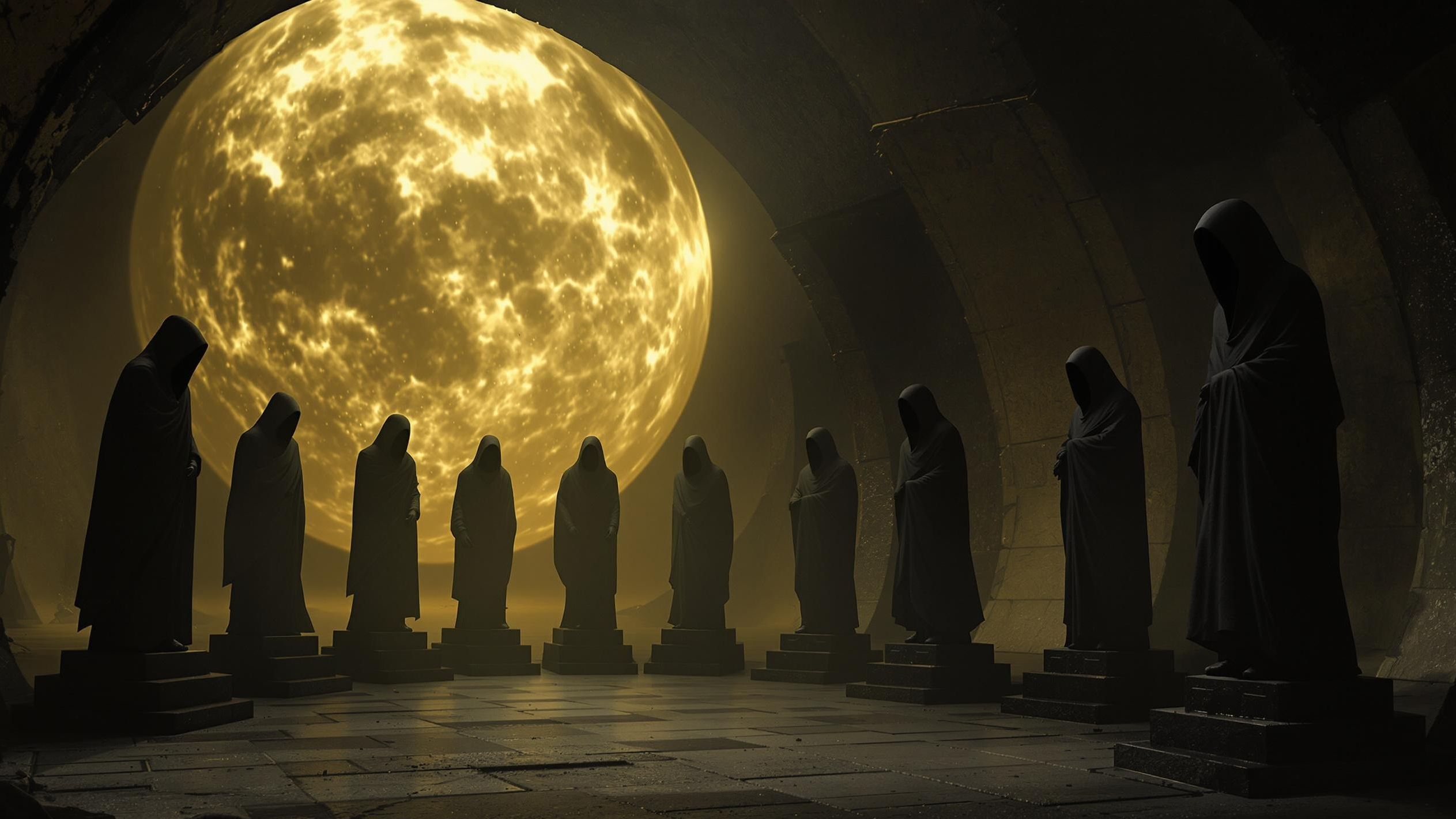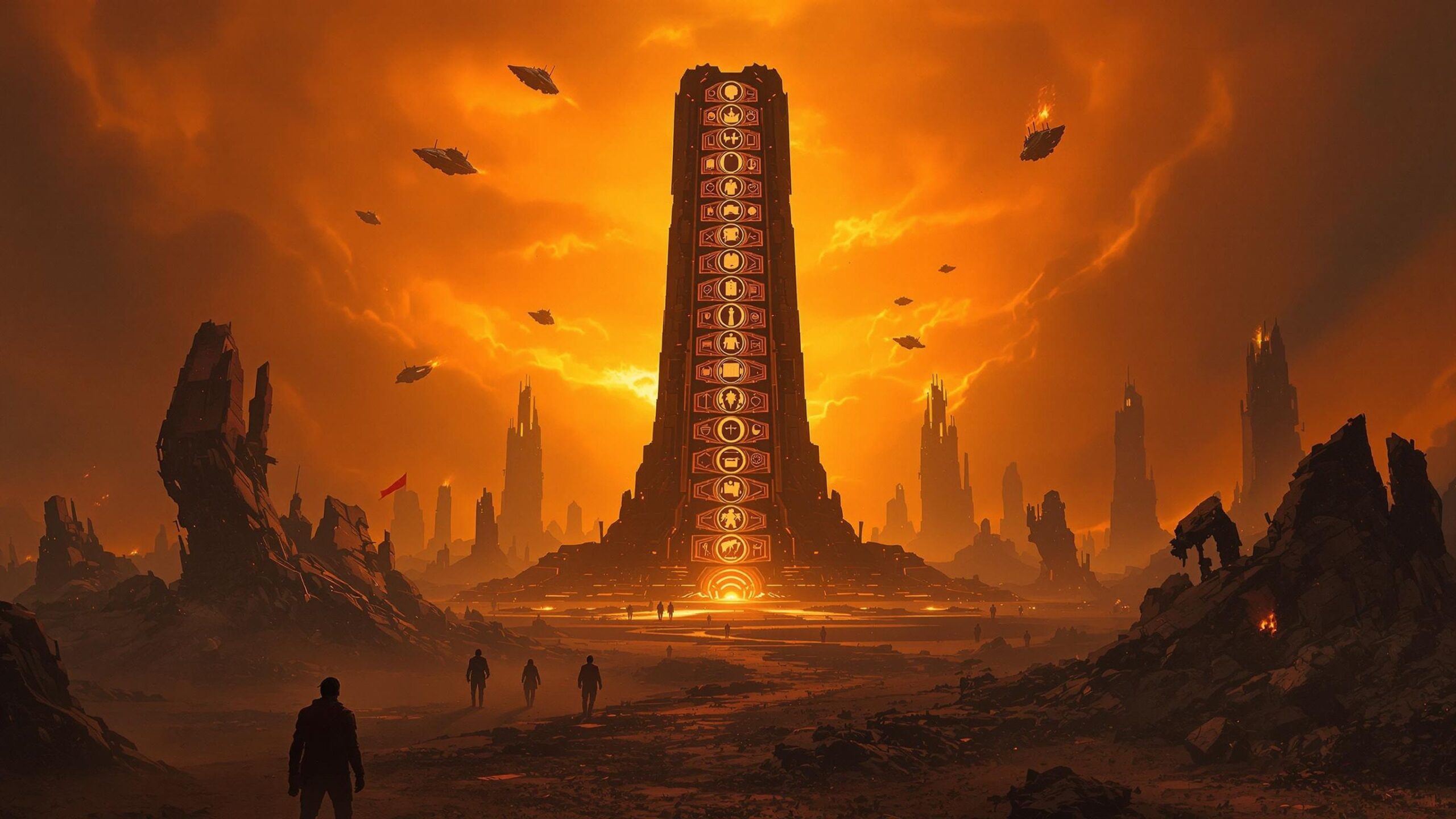Assassination is an art form in the world of Dune, not merely a tool of war or revenge. It is a political weapon, a sacred duty, a whispered transaction carried out in shadows by the most cunning minds and lethal bodies in the Imperium. From Bene Gesserit operatives to shape-shifting Face Dancers, Dune is populated by assassins who don’t just kill—they unravel dynasties, topple empires, and shift the course of human history. These ten assassins aren’t only dangerous because of their skills—they are deadly because of their motives, methods, and the chaos they leave behind. Each one represents a different facet of death in Dune: surgical, spiritual, psychological, or prophetic.
#10: Captain Verrus Talik
A high-ranking Sardaukar agent turned black ops infiltrator, Verrus Talik was the Emperor’s scalpel in the shadows. His specialty was psychological destabilization and silent termination. Unlike most Sardaukar, who relied on brute strength and intimidation, Talik used silence and subterfuge. Trained in voice mimicry, poison deployment, and unarmed assassination, Talik orchestrated the downfall of at least six minor Houses by impersonating their nobles and triggering internal conflict. The most chilling part of his reputation was his use of empathy to lull targets into trust before dispatching them with surgical precision. He was eventually cornered by Atreides loyalists but took his own life before capture, proving that even in death, a true assassin controls their fate.
#9: Bijaz the Dwarf
A Tleilaxu creation and a mental time bomb, Bijaz’s deadliness comes not from traditional weapons but from what he plants in the minds of others. Bijaz played a critical role in the conditioning of Duncan Idaho’s ghola in Dune Messiah, embedding a subconscious command that could turn him into a programmed killer at the right moment. Bijaz’s erratic behavior and whimsical speech masked an insidious cunning. His ability to manipulate both humans and gholas made him one of the most dangerous pawns the Bene Tleilax ever placed on the board. His mind was weaponized to such an extent that even speaking with him posed a risk—because what he offered wasn’t just knowledge. It was programming disguised as prophecy.
#8: Tammar Sek
A Sardaukar blade master known more in myth than record, Tammar Sek was rumored to have executed over 400 targets in solo missions across the Imperium. He operated under the pretense of ritual duels but turned every encounter into a psychological spectacle. His signature move involved offering his opponents a false sense of security—sometimes even letting them land the first blow—before delivering the killing strike. Though rarely documented, his presence at certain political disappearances has been heavily implied in Sardaukar archives. Sek’s name became a campfire horror story among the Fremen, who eventually claimed his bones were found buried beneath a sietch he tried to infiltrate. Whether truth or legend, Sek embodies the type of assassin who leaves behind stories as sharp as his blades.
#7: Scytale the Face Dancer
As a member of the Bene Tleilax and a master of disguise, Scytale’s danger lies in his ability to become anyone. In Dune Messiah, he attempts to assassinate and manipulate Paul Atreides by infiltrating his closest circles and offering Paul a resurrected version of his dead son. Scytale is not just an assassin—he’s a deceiver who uses empathy and impersonation as weapons. His ability to completely replicate mannerisms, speech, and thought patterns of others made him nearly impossible to detect until it was too late. Though Paul ultimately kills him, Scytale’s legacy echoes through later books, with his successors continuing to sow chaos through face-dancing assassinations. He represents the loss of identity as the ultimate weapon.
#6: Reverend Mother Gaius Helen Mohiam
Though typically viewed as a political player and Bene Gesserit matriarch, Mohiam’s skill set absolutely includes the training and mindset of an assassin. Her use of the Voice, her intimate knowledge of poisons, and her readiness to kill for the greater good make her a deadly agent of the Sisterhood. She was instrumental in placing genetic breeding programs in motion—programs that involved seduction, subterfuge, and strategic elimination. Her interrogation of Paul Atreides with the gom jabbar—a poison needle capable of instantaneous death—is one of the most iconic assassination threats in the saga. Mohiam doesn’t need to strike. Her very presence promises a death that’s always a breath away.
#5: Waff the Tleilaxu Master
Waff was a Tleilaxu mastermind and religious zealot who weaponized genetics, ideology, and infiltration. Though not an assassin in the traditional sense, Waff orchestrated the breeding and conditioning of assassins, gholas, and artificial life forms with implanted compulsions. His vision for humanity’s future included planned destruction, controlled extinction, and the erasure of competing ideologies. He sent agents laced with deadly modifications—chemical, genetic, even spiritual—to execute political and religious figures who opposed Tleilaxu goals. His deadliest work wasn’t what he did with his hands—it was the monsters he created with his mind.
#4: Alia Atreides (as possessed)
In the later stages of her life, Alia becomes one of the most terrifying assassins in the Dune saga—not of her own will, but as a vessel of the ancestral Baron Vladimir Harkonnen. Her transformation into a possessed tyrant unleashes a version of Alia that is manipulative, paranoid, and capable of ordering mass executions without remorse. Trained as a Bene Gesserit and gifted with ancestral memory, she was already a formidable figure. But under the Baron’s influence, her actions become erratic and deadly. Her orchestration of political purges, targeted killings of dissenters, and her manipulation of religious zealotry makes her a killer operating on both spiritual and political planes. She doesn’t need to wield the knife—she commands the hand that does.
#3: Baron Vladimir Harkonnen
While not a traditional assassin, the Baron was the ultimate orchestrator of death. His assassinations were often carried out by proxies—like Piter De Vries or Rabban—but they were always deeply personal and politically strategic. He eliminated rivals, silenced dissenters, and engineered traps designed to psychologically destroy his enemies. The Baron’s real power lay in his ability to make people want to kill each other for him. He weaponized lust, greed, and fear, manipulating others into carrying out his dirtiest work. And when necessary, he struck himself—with poison, traps, and blackmail. His style of assassination wasn’t just death—it was the annihilation of dignity, reputation, and memory.
#2: Piter De Vries
As a twisted Mentat and product of the Bene Tleilax, Piter was a cold, calculating killer who took joy in orchestrating cruelty. His brilliance as a Mentat allowed him to predict and exploit weaknesses in people with surgical precision. His love of spice heightened his perceptive abilities but also fueled his sadism. He masterminded the betrayal of Duke Leto and engineered the trap on Arrakis that would destroy House Atreides. Though killed by Thufir Hawat before he could enjoy his spoils, Piter’s impact as an assassin lives on in the death he left behind. He was proof that intellect, when poisoned by ambition and indulgence, becomes a blade sharper than any dagger.
#1: Paul Atreides (Muad’Dib)
While remembered as a messianic figure and emperor, Paul Atreides is also, without question, the deadliest assassin in Dune—not just because of how many he killed, but because of who he killed, why, and what happened afterward. Trained by the Bene Gesserit, mentats, and the Fremen, Paul mastered every physical and mental tool available. He assassinated not only individuals like Feyd-Rautha in ritual combat and Scytale with a hidden knife, but also ideas—he dismantled empires and slayed legacies. His prescient abilities allowed him to see his enemies’ deaths before they happened. But more hauntingly, Paul’s rise to godhood became an indirect act of mass assassination: the jihad in his name killed billions across the galaxy. His every move—every breath—was a calculated act of destiny and destruction. Paul is the assassin who tried to stop his own hand, and in failing, killed more than any blade ever could.
Assassins in Dune are not mere killers—they are architects of fate, executing moves so precise they resonate across time. Whether they act through poison, prophecy, or political manipulation, these ten figures show that death is often the quietest yet most permanent form of power in the Imperium. They wield not only knives and toxins but ideologies and identities, dissolving dynasties with a whisper or a stare. From Paul’s reluctant role as messianic executioner to Scytale’s terrifying mimicry, each assassin proves that in the world of Dune, it’s often the unseen strike that hits hardest—and lasts longest.




